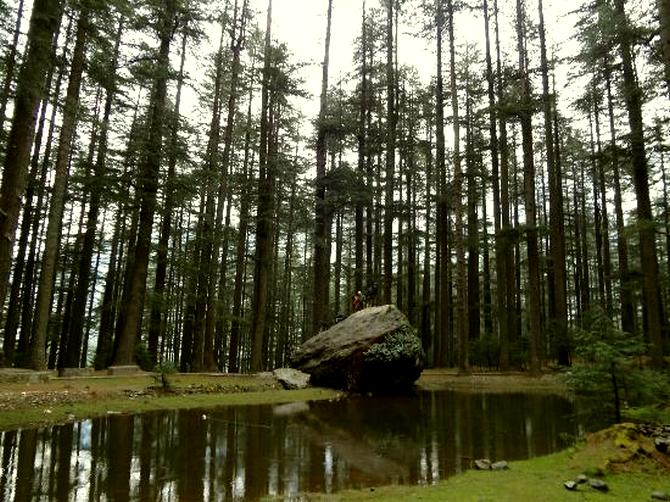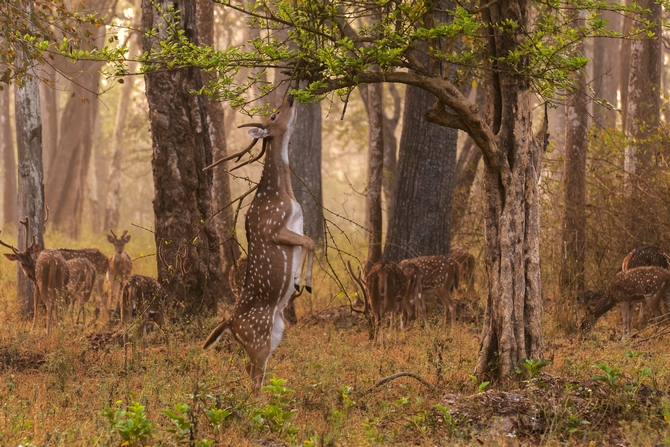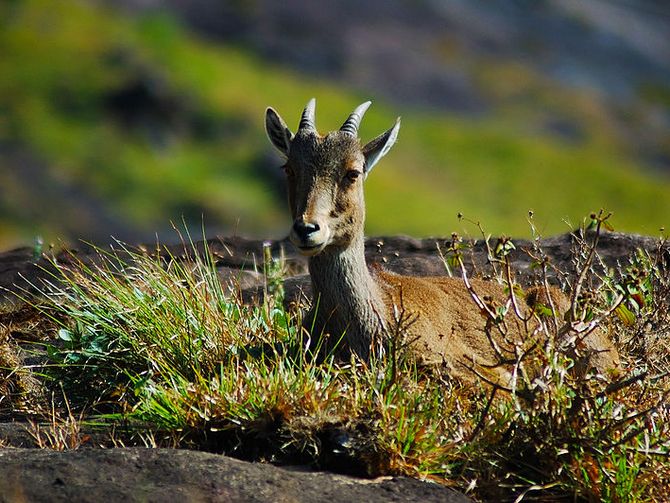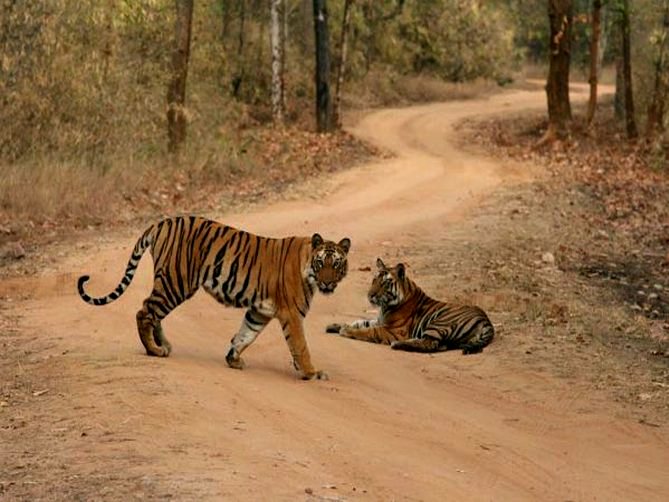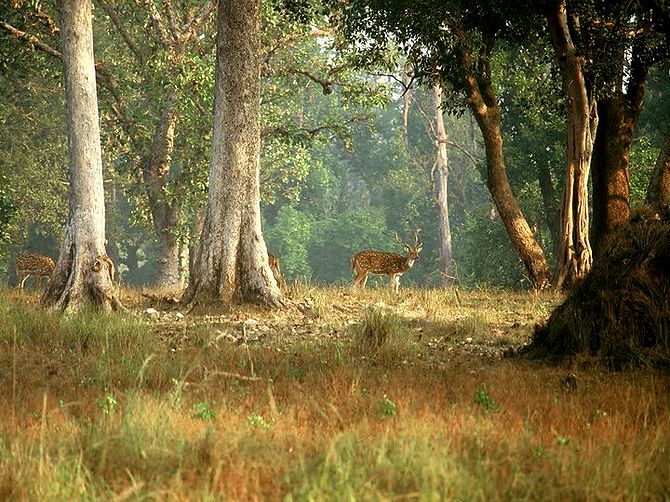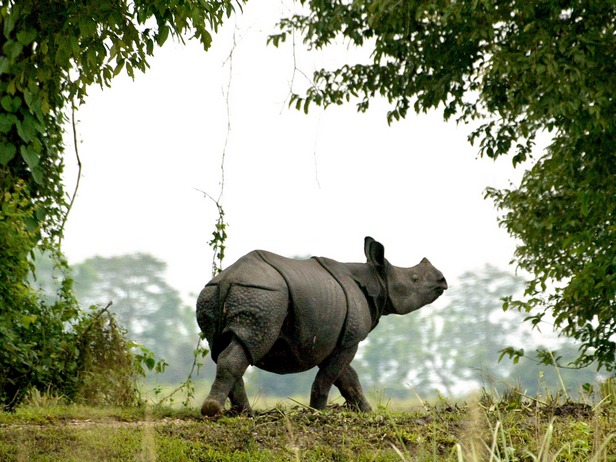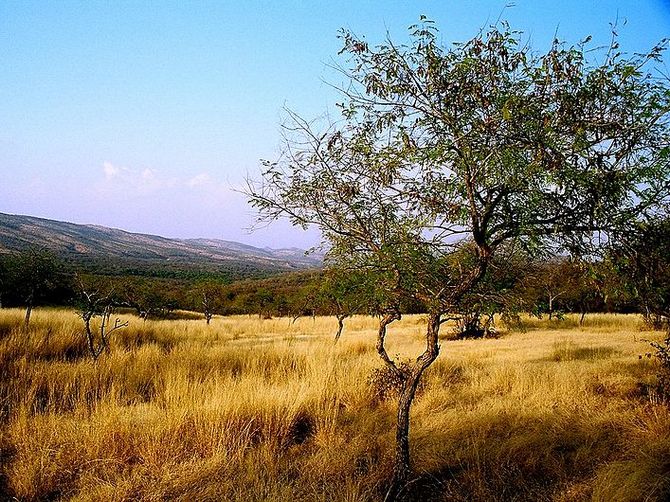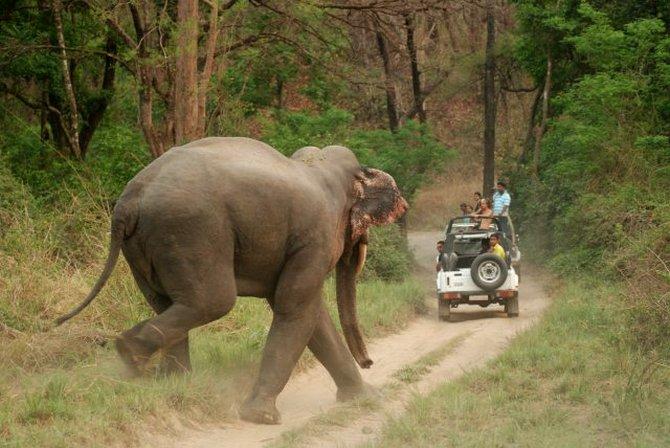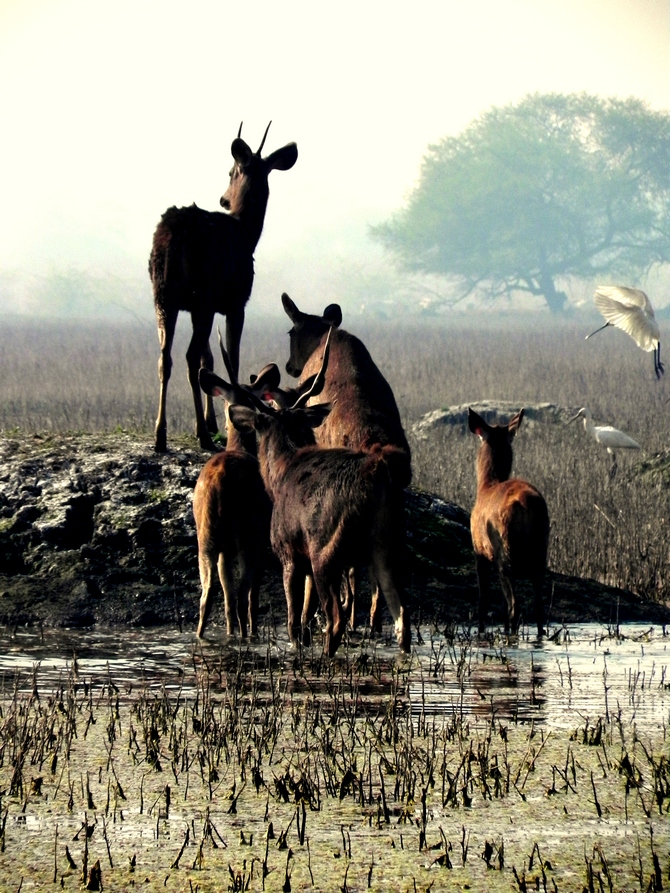 | « Back to article | Print this article |
STUNNING PICS: The 10 best national parks in India
TripAdvisor lists out some of the best parks in the country. Did the one in your state make the cut? Read on and find out!
Leading travel website, TripAdvisor.in has ranked the best national parks in India. The ranking is based on a scoring index that takes into consideration travellers' reviews as well as the average review rating on the site.
10. Van Vihar National Park
Manali, Himachal Pradesh
Van Vihar is more of a nature park than a national park. Even so, it makes for a great outing if you're with kids or a good enough place for long romantic walks amidst the trees. It is also possibly the only park in this list where you'll find vendors selling corn and Maggi noodles!
Nagarhole National Park
9. Nagarhole National Park
Karnataka
Named after winding river that flows east through its heart, the Nagarhole National Park is spread across 643.39 sq km across two districts -- Mysore and Kodagu -- of Karnataka.
Having achieved the status of a National Park in 1983, the Nagarahole National Park forms a part of the Nilgiri Biosphere Reserve.
Along with Bandipur National Park (spread across 875 sq kms and Mudumalai Wildlife Sanctuary (spread across 325 sq kms) and Wayanad this is one of the best-protected habitats for endangered species of elephants and tigers.
Rajamalai (Eravikulam) National Park
8. Rajamalai (Eravikulam) National Park
Munnar, Kerala
Spread across 97 sq km in the Idukki district of Kerala, the Eravikulam National Park is home to the largest population of the endangered Nilgiri Tahr (by the Park's estimates, it is around 700).
Besides the tahr, the park also has gaurs, sambar deer, golden jackals, leopards and tigers in its vicinity as well as as Nilgiri langurs, Indian porcupines and small clawed otters besides elephants who make seasonal visits.
According to its website, the National Park also houses about 120 species of birds 100 odd butterflies.
A new species of frog with unusually was also discovered recently in the Park's premises and that has been recommended for urgent preservation.
While private vehicles aren't allowed, the Park provides trips in busses so as to reduce pollution, though the queues for them tend to be very long. Try making it to the park as early on in the day as possible or be prepared for a long wait.
Bandhavgarh National Park
7. Bandhavgarh National Park
Madhya Pradesh
Arguably one of the best places in India to spot a tiger, the Bandhavgarh National Park also holds the largest breeding population of leopards and several species of deer. Located in Madhya Pradesh, Bandhavgarh was declared a national park in 1968 and is spread across an area of 105 sq km.
Its mixed vegetation and topography makes Bandhavgarh a perfect home for several rarely-seen animals including the sloth bear. Bandhavgarh National Park also has the highest density of tigers in the country and has over the years seen a great increase in the country thus attracting several tourists at its vicinity.
Kanha National Park
6. Kanha National Park
Mandla, Madhya Pradesh
Kanha's ravines, meadows and bamboo forests were the inspiration for Rudyard Kipling's most famous work, The Jungle Book. The Kanha National Park however came into being only in 1955. It also forms the heart of the Kanha Tiger Reserve that was created in 1974 under Project Tiger.
The park counts its preservation of the rare hardground Swamp Deer (or Barasingha) as one of its greatest achievements and is counted amongst the most well maintained national parks in Asia.
Besides tiger spotting, which remains a major draw, Bamini Dadar best known as the Sunset Point is another attraction amongst tourists as the glowing ball of light sets for the day as sambar deer and gaurs graze in the foreground.
Kaziranga National Park
5. Kaziranga National Park
Guwahati, Assam
Located on the banks of the mighty Brahmaputra River in Assam, the Kaziranga National Park, according to its website, covers an area of about 430-sq-kms making it the most 'ideal habitat for the Indian One-Horned Rhino'.
Having been declared a wildlife sanctuary in 1940, the Kaziranga National Park also houses elephants, the Indian Bison, Swamp Deer, Hog Deer, sloth bears, tigers, leopard, jackals and wild buffalos among other wild animals.
The Park is also a birding paradise where large numbers of migratory birds descend on the lakes and marshy areas during winters.
The best time to visit Kaziranga National Park is between mid-November and early April months.
Valley of Flowers
4. Valley of Flowers
Joshimath, Uttarakhand
The stunning Valley of Flowers tests your will to visit it. You can take a vehicle up to Govindghat and trek from there on staying at Ghangaria, a village about 13 km from Govindghat. Spend the night there then head out to the Valley of Flowers the following day.
Rediff reader and traveller Mridula Dwivedi writes of her visit: "The Valley itself is about 3km away and the route is dotted with flowers almost all the way. We spotted geraniums quite early. They were spread like a field in the valley. River Pushpawati flows through the Valley of Flowers... The Himalayan Blue Poppies and Brahma Kamal are two (of the many) exotic flowers that bloom in the Valley.
Dwivedi also recommends going further to get a glimpse of the serene Hemkunt Sahib Lake.
Ranthambore National Park
3. Ranthambore National Park
Sawai Madhopur, Rajasthan
Once the hunting grounds for the Maharajas of Jaipur, the Ranthambore National Park is covers an area of about 400 sq km.
After being declared a wildlife sanctuary in 1957 and the protection of the conservation project, Project Tiger, it received the status of a National Park in 1981.
The Ranthambore National Park is interesting in it that it houses several structures including ruins and a huge fort, after which the park is named atop a hill.
What also makes Ranthambore popular is that its tiger community seems to be used to human presence, making it easier to spot the beast. Several tigers have been captured on camera here and some like Machali, the tigress, are celebrities in their own right. (Earlier last month the grand old tigress even received a commemorative postal cover).
Needless to say, the National Park is a wildlife enthusiast and photographer's dream come true and according to its website is open between October and mid-June each year.
Jim Corbett National Park
2. Jim Corbett National Park
Uttarakhand
Probably the most inviting place for nature lovers living in and around Delhi, the Jim Corbett National Park owes its name to the legendary British hunter, conservationist, author and photographer.
It also has the distinction of being recognised as the first national park in mainland Asia in 1936.
The park is spread across two districts -- Nainital and Pauri -- in Uttaranchal and covers an area of 521 sq km.
Together with the Sonanadi Wildlife Sanctuary and Reserve Forest areas, it also forms the Corbett Tiger Reserve that is spread over 1288 sq km.
Even though the most famous of the Park's residents are the Bengal Tigers, chances are you'll encounter its second famous inhabitants -- the Asiatic Elephants -- more easily.
Keoladeo Ghana National Park
1. Keoladeo Ghana National Park
Bharatpur, Rajasthan
Better known as the Bharatpur Bird Sanctuary in Bharatpur, Rajasthan, the Keoladeo Ghana National Park is an ornithologist's paradise. According to its website, the national park is home to over 230 species of birds and was declared a protected sanctuary in 1971.
Once the hunting ground for the maharajas of Bharatpur, the park was the venue for the annual duck shoots held in honour of the British viceroys.
While the princely states were permitted to shoot after Independence, these rights were revoked after 1972 and a decade later grazing was banned in the park which led to violent clashes between the local communities and the government.
The park was declared a World Heritage Site in 1985.
